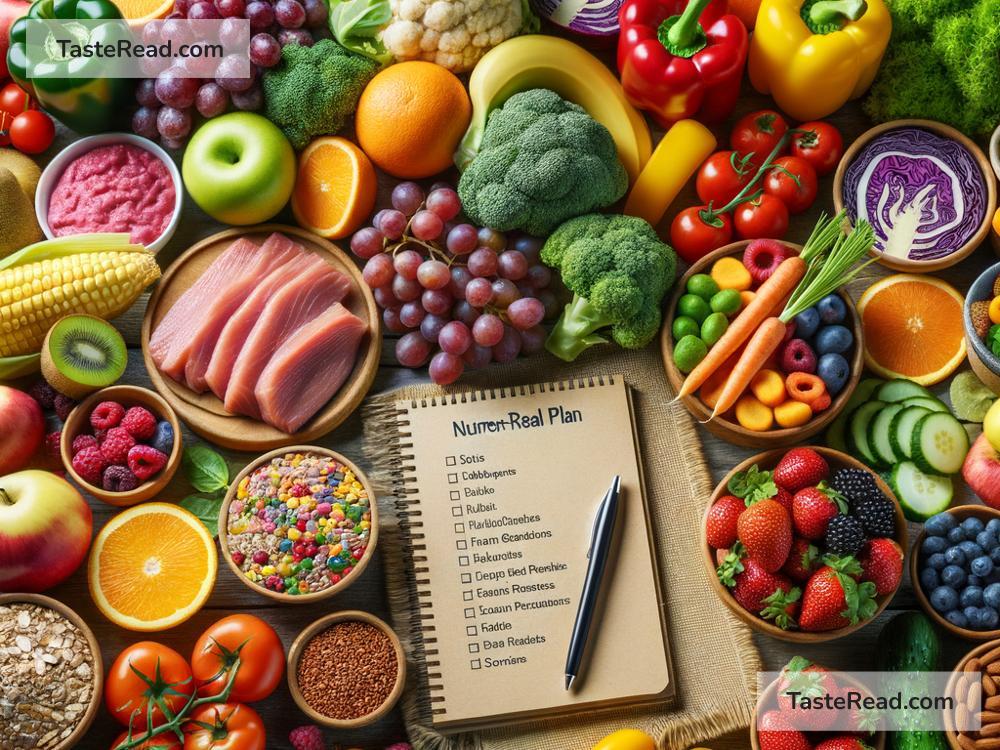The Science Behind Nutrient-Rich Diets: Eating Right for a Healthier Life
We’ve all heard the saying, “You are what you eat.” But what does that really mean? Simply put, the foods we eat give our bodies the fuel and tools they need to function correctly. A nutrient-rich diet is about choosing foods packed with vitamins, minerals, and other important substances that keep us healthy. Today, we’ll explore the science behind nutrient-rich diets and why they’re so important.
What Are Nutrients?
Before diving into the details, let’s talk about nutrients. Nutrients are substances in food that the body uses to grow, repair itself, and stay healthy. There are six main types of nutrients:
-
Carbohydrates – These are the body’s main source of energy. Found in foods like bread, rice, and fruits, carbs give your cells the power to keep moving.
-
Proteins – Proteins are vital for building and repairing tissues. They are like the construction workers of your body, found in meat, fish, beans, and eggs.
-
Fats – Contrary to their bad reputation, healthy fats are essential. They provide energy and help the body absorb certain vitamins. Nuts, olive oil, and avocados are great sources of healthy fats.
-
Vitamins – Vitamins help your body function properly. For example, vitamin C boosts your immune system, while vitamin D strengthens your bones.
-
Minerals – Minerals, like calcium and iron, also play key roles. Calcium is good for your bones, and iron carries oxygen in your blood.
-
Water – While not technically a nutrient, water is essential for life. It helps every cell, tissue, and organ function properly.
Nutrient-rich diets focus on foods that provide all these elements in the healthiest way possible.
How Does the Body Use Nutrients?
Here’s where the science comes in! When you eat food, digestion breaks it down so your body can absorb the nutrients. For example:
- Carbohydrates are broken down into glucose (sugar), which gives energy to your brain and muscles.
- Proteins are broken down into amino acids, which help build and repair tissues like muscles and skin.
- Fats are converted into fatty acids, which store energy and support cell growth.
Once absorbed, these nutrients are delivered to cells through your bloodstream. Without the right nutrients, your body can’t perform all its essential functions properly.
Why Are Nutrient-Rich Foods Important?
Not all foods are created equal! Some foods are low in nutrients but high in calories, sugar, and unhealthy fats—like chips, soda, and candy. Eating too much of these can lead to health problems such as obesity, diabetes, and heart disease. Nutrient-rich foods, on the other hand, contain fewer empty calories and are packed with the good stuff your body needs.
The Benefits of Nutrient-Rich Diets
Here are some science-backed benefits of eating nutrient-rich foods:
-
Boosted Energy Levels: Foods like whole grains and fresh fruits provide lasting energy. They help you feel active and alert throughout the day.
-
Improved Immunity: Nutrients like vitamin C and zinc strengthen your immune system, helping your body fight off illnesses.
-
Better Brain Function: Omega-3 fatty acids (found in fish and nuts) improve brain health, memory, and concentration.
-
Stronger Bones and Muscles: Calcium and vitamin D are essential for bone strength, while protein helps build muscles.
-
Reduced Risk of Chronic Illness: Eating nutrient-rich foods lowers your risk of conditions like heart disease, diabetes, and some cancers.
-
Healthier Skin and Hair: Vitamins A and E, along with healthy fats, improve skin health and strengthen hair.
What Does a Nutrient-Rich Diet Look Like?
Now that you know why nutrient-rich foods are important, what should your plate look like? Here are some tips:
-
Fill Up on Whole Foods: Whole foods are minimally processed and closer to their natural state. These include fruits, vegetables, whole grains, nuts, seeds, and lean proteins.
-
Eat the Rainbow: Brightly colored fruits and vegetables contain unique nutrients. For example, carrots are high in vitamin A, while leafy greens like spinach are rich in iron.
-
Choose Healthy Fats: Avoid fried and processed foods with trans fats. Opt for healthier fats like those found in avocados and olive oil.
-
Watch Sugar and Salt Intake: Cutting back on added sugars and salt reduces the risk of heart issues and high blood pressure.
-
Stay Hydrated: Water is just as important as food. Drink plenty of water throughout the day to support digestion and keep cells healthy.
-
Moderation Is Key: A nutrient-rich diet doesn’t mean you have to avoid treats altogether. Balance is key—enjoy your favorite foods occasionally while focusing on healthy choices most of the time.
The Role of Science in Guiding Nutrition Choices
Scientists study how nutrients affect the body by conducting experiments and analyzing data. For example, years of research have shown that eating plenty of fruits and vegetables reduces the risk of certain diseases. Research also helps identify which combinations of nutrients work best together. For instance, vitamin D enhances calcium absorption, which helps keep bones strong.
Thanks to science, we know that what we eat directly impacts our health. This knowledge is the foundation of modern nutritional guidelines.
Final Thoughts
Eating a nutrient-rich diet isn’t about strict rules or giving up your favorite foods—it’s about taking small, healthy steps. When you prioritize fresh, whole foods, you’re giving your body the tools it needs to thrive. Plus, you’ll feel better, have more energy, and reduce your risk of illnesses in the long run.
The science behind nutrient-rich diets is simple: food is fuel. Choose better fuel, and your body will thank you. So next time you plan a meal, think about what your body truly needs—and enjoy the benefits of a healthier lifestyle!


